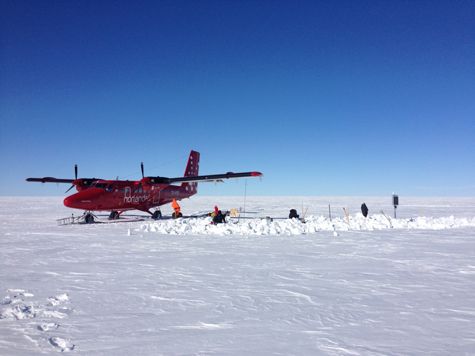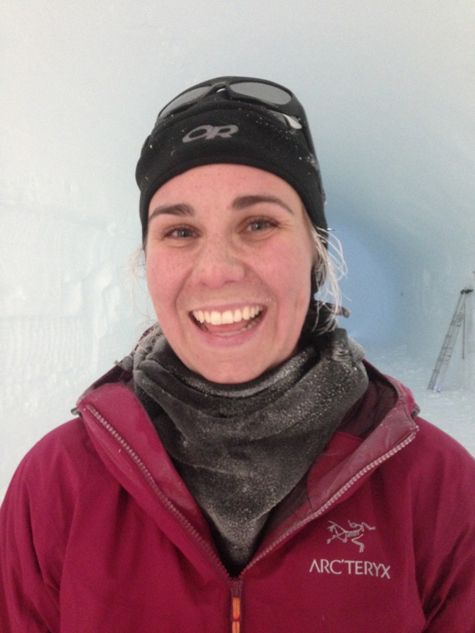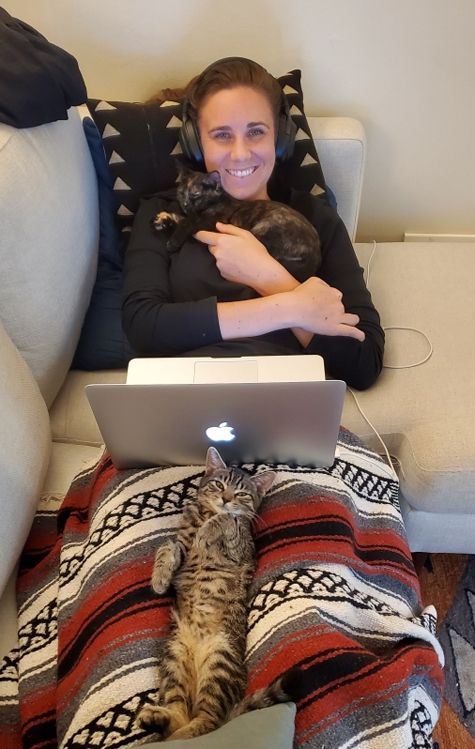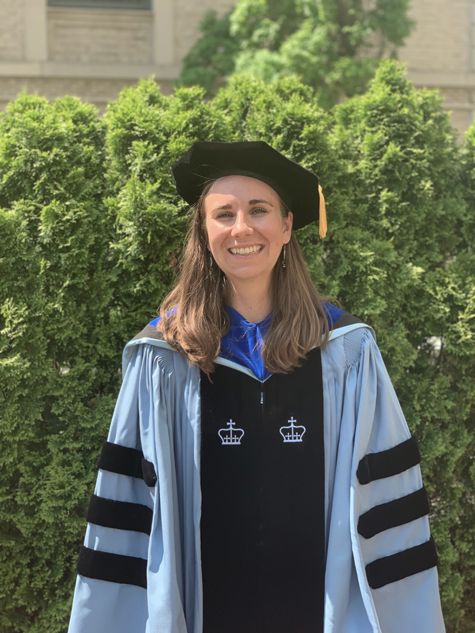Early Career Scientist Spotlight
Dr. Kira Olsen
Seismologist
Planetary Geology, Geophysics and Geochemistry Laboratory
What is your research focus?
My research focus is on understanding icy environments using geophysical techniques. I primarily focus on seismic techniques and studying seismic events generated in ice. These ‘icequakes’ are similar to earthquakes, except that they occur when ice fractures or deforms, instead of when rock does. I study the elastic waves generated by an icequake to get at the stress state of ice, and to understand what kinds of driving forces are leading to deformation. The energy released in these seismic events can also be used to study material properties, kind of like a lightning bolt briefly illuminating the surroundings that the energy moves through. So, in addition to studying the seismic source, I also work to develop techniques that allow us to use icequakes (which are very low magnitude) to study structure, such as how thick an ice layer is, or to constrain the properties of materials beneath the ice.
I came to this research through study of the Greenland and Antarctic ice sheets, and I now use my expertise to answer questions about icy moons. The methodologies we’ve developed to study ice seismicity here on Earth have been hard won (it’s not trivial to deploy seismometers on polar ice sheets!), so it’s exciting to be able to use datasets for both terrestrial glaciology research and planetary-science applications.

Credit: Doug Bloomquist
How did you end up working at NASA Goddard?
My Ph.D. research focused on glacial seismology and, during that time, I was studying purely terrestrial research questions. Towards the end of graduate school, I started thinking about icy worlds and what we could learn about them using the datasets and the tools we regularly employ to study terrestrial ice sheets. After reaching out to many people and building some new connections, I proposed a postdoc project at GSFC that would involve using seismic data collected on a large Antarctic ice shelf as an analog to try to understand the kind of seismicity we might expect to find on an icy world like Enceladus or Europa. I am thrilled to be part of the planetary geophysics group here at Goddard, and I am always learning new things about planetary science, which in turn gives me new ideas for how to use Earth science data to study icy worlds.
What is one of your favorite moments in your career so far?
I’ve been involved in field expeditions to deploy seismometers and GPS instruments on the Greenland ice sheet, and these trips have been definite highlights of my career. Field expeditions like this really impress upon you how otherworldly some places on Earth are, and I’ve felt that strongly when working in the central part of the Greenland ice sheet. You are camping and working atop two miles of ice, with flat white ice extending as far as you can see around you. I’ve loved getting to actually experience the environments I spend my days thinking about, and it’s incredible to be in the high arctic during summertime, when the sun doesn’t set and it feels like you have stepped out of your regular routine and into a completely new world.

Credit: Doug Bloomquist
What does a typical day at work look like for you?
Like many of us, I have been working from home for over a year now, so I have a lot of virtual meetings in addition to independent work. I usually spend my mornings writing/testing/debugging code, which is work that I really enjoy. I do many of my analyses using high-performance computing nodes, which I access remotely. I feel so fortunate for that remote access, which allows me to keep my research going even from my home office/living room! I often have virtual meetings in the afternoons to touch base with colleagues about collaborations or to check in with two undergraduate students I am advising on projects. During this work-from-home time, I’ve gotten into the routine of taking a walk around the neighborhood at the end of my workday to stretch my legs and help tell my brain that I’m switching out of work mode.

Credit: Dan Rasmussen
What are your future research interests and goals?
I am excited about the new datasets that are coming out of field expeditions to the Greenland and Antarctic ice sheets, and the ability they give us to learn more and more about Earth’s ice sheets. One goal of mine is to apply more machine-learning tools to extract signals from these new datasets. I’m really motivated to test these powerful new methodologies for working with seismic data collected on ice here on Earth, so that we will be ready to work with the first seismic observations collected on an icy world (like Titan!) when we get them.
What do you enjoy the most about your job?
I love that it’s my job to be learning new things and always challenging myself. I really enjoy the self-driven aspect of being a researcher, and that I can follow up on an intriguing finding or idea that really piques my curiosity. I also get a lot of satisfaction out of learning new skills, be it a new statistical method, or a way to get my code to run faster, and I appreciate that I get this satisfaction regularly, in little doses.

Credit: Dan Rasmussen
What is a fun fact about you?
I grew up in Alaska! I’m from a small town called Homer in south-central Alaska. Living in Homer means routinely being shaken by small (and sometimes large!) earthquakes. My hometown also has a view of a mountain range with multiple glaciers. So, I think I can trace my interest in both seismology and ice fracture to my very earliest years...
Biography
Home Town:
Homer, Alaska
Undergraduate Degree:
BA in Geology, Colorado College, Colorado Springs, CO
Post-graduate Degrees:
PhD in Earth & Environmental Sciences, Columbia University, New York, NY

